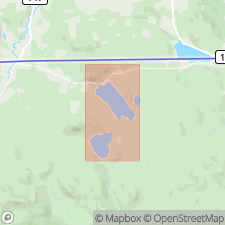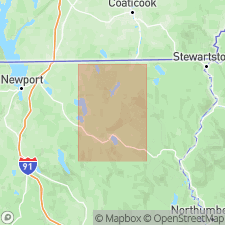
- Usage in publication:
-
- Averill granite
- Modifications:
-
- Original reference
- Dominant lithology:
-
- Granite
- AAPG geologic province:
-
- New England province
Summary:
Pg. 39-42. Averill granite. Pink, two-mica granite of medium grain, with Subporphyritic texture. Intrudes a muscovite-biotite schist; the contact being well exposed on summit of Averill Mountain and in bed of Averill Stream 100 yards below the granite bridge of Norton Mills road, Essex County, northeastern Vermont. Underlies and surrounds Big Averill Lake and all but a small part of Little Averill Lake. Age is unknown.
Source: US geologic names lexicon (USGS Bull. 896, p. 95).

- Usage in publication:
-
- Averill granite
- Modifications:
-
- Areal extent
- AAPG geologic province:
-
- New England province
Summary:
1959, Dissert. Abs., v. 20, no. 5, p. 1740. Granitic rocks occupy about two-thirds of Island Pond area. Three major granitic bodies are present: Averill granite, Nulhegan quartz monzonite (new), and Echo Pond granitic complex (new). Age is unknown.
Source: US geologic names lexicon (USGS Bull. 1200, p. 178).
For more information, please contact Nancy Stamm, Geologic Names Committee Secretary.
Asterisk (*) indicates published by U.S. Geological Survey authors.
"No current usage" (†) implies that a name has been abandoned or has fallen into disuse. Former usage and, if known, replacement name given in parentheses ( ).
Slash (/) indicates name conflicts with nomenclatural guidelines (CSN, 1933; ACSN, 1961, 1970; NACSN, 1983, 2005, 2021). May be explained within brackets ([ ]).

